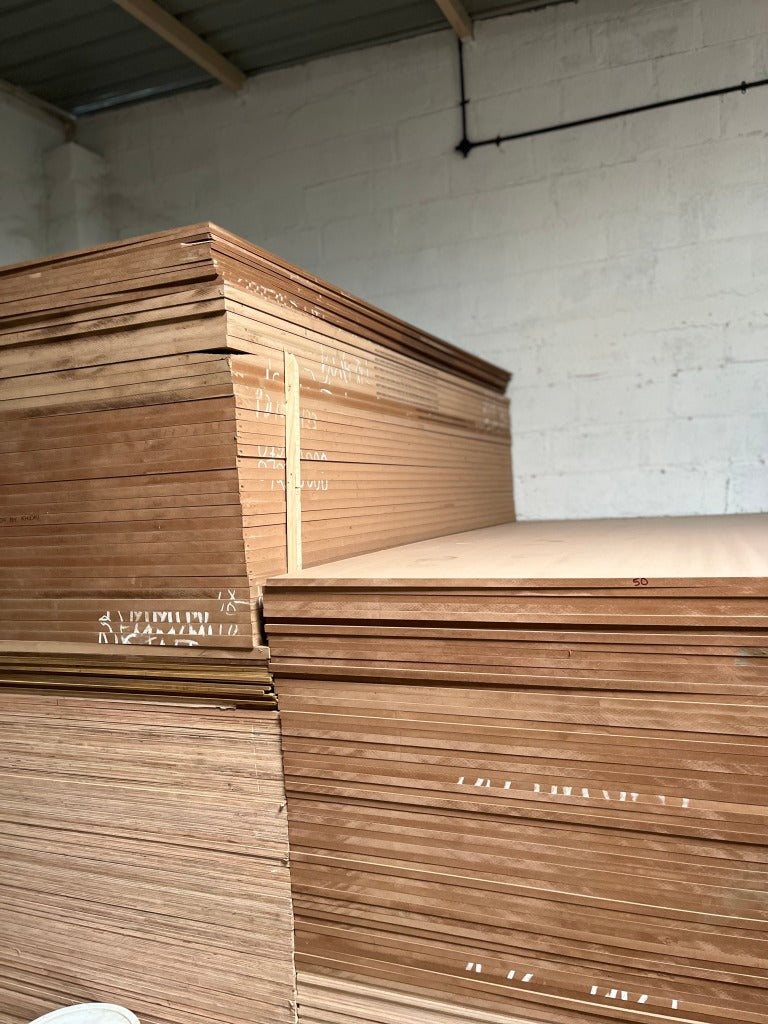
Enhancing Sound Quality: The Role of MDF in Acoustic Paneling
Share

Introduction
In the bustling environments of homes and offices, managing sound quality is crucial for creating comfortable and productive spaces. Acoustic paneling, with its ability to absorb, diffuse, or reflect sound waves, plays a pivotal role in achieving optimal acoustics. Among the various materials used for acoustic paneling, Medium Density Fiberboard (MDF) stands out for its versatility, affordability, and effectiveness. In this detailed blog, we'll explore the role of MDF in acoustic paneling and how it contributes to improving sound quality in diverse environments.
- Understanding Acoustic Paneling:
- Acoustic paneling is a technique used to control sound within a space by managing the reflection, absorption, and diffusion of sound waves.
- Panels are strategically placed on walls, ceilings, or floors to address specific acoustic issues such as reverberation, echoes, and noise transmission.
- Acoustic panels can be made from various materials, including fabric, foam, wood, metal, and MDF, each offering unique acoustic properties and aesthetic possibilities.
- Advantages of MDF in Acoustic Paneling:
- Density: MDF is denser than many other materials used for acoustic paneling, making it an effective sound absorber and dampener.
- Stability: MDF panels maintain their shape and structural integrity over time, ensuring long-term acoustic performance.
- Versatility: MDF can be easily cut, shaped, and finished to meet specific design requirements, allowing for customized acoustic solutions.
- Affordability: MDF is a cost-effective option for acoustic paneling, offering excellent value for money compared to other materials.
- Types of MDF Acoustic Panels:
- Absorptive Panels: Made from MDF and acoustic foam or fiber materials, absorptive panels absorb sound waves to reduce reverberation and improve clarity in a room.
- Diffusive Panels: Designed with irregular surfaces or geometric patterns, diffusive panels scatter sound waves to minimize echoes and create a balanced acoustic environment.
- Combination Panels: Combining absorptive and diffusive properties, combination panels offer comprehensive sound management solutions for various spaces and applications.
- Applications of MDF Acoustic Panels:
- Home Theaters: MDF acoustic panels enhance the sound quality of home theaters by minimizing echoes, improving speech intelligibility, and enhancing the overall listening experience.
- Offices: In open office layouts, MDF acoustic panels help reduce noise distractions and create quieter work environments conducive to concentration and productivity.
- Recording Studios: MDF acoustic panels are essential for recording studios to control room acoustics, eliminate unwanted reflections, and achieve pristine sound recordings.
- Auditoriums and Concert Halls: MDF acoustic panels optimize the acoustics of auditoriums and concert halls by controlling reverberation, enhancing sound clarity, and ensuring optimal audience experiences.
- Design Considerations:
- Aesthetics: MDF acoustic panels can be customized with various finishes, colors, and textures to complement the interior design of a space.
- Installation: Proper installation of MDF acoustic panels is essential for maximizing their acoustic performance. Panels should be strategically placed and securely mounted for optimal results.
- Maintenance: MDF acoustic panels are relatively low-maintenance and can be easily cleaned with a soft cloth or vacuum to remove dust and debris.
Conclusion:
In conclusion, Medium Density Fiberboard (MDF) plays a crucial role in acoustic paneling, offering a versatile, affordable, and effective solution for improving sound quality in homes, offices, and various other environments. Whether used for absorption, diffusion, or a combination of both, MDF acoustic panels provide an indispensable tool for achieving optimal acoustics and creating comfortable, functional, and aesthetically pleasing spaces. As the demand for better sound quality continues to grow, MDF acoustic panels will remain an integral component of modern interior design and architecture.

